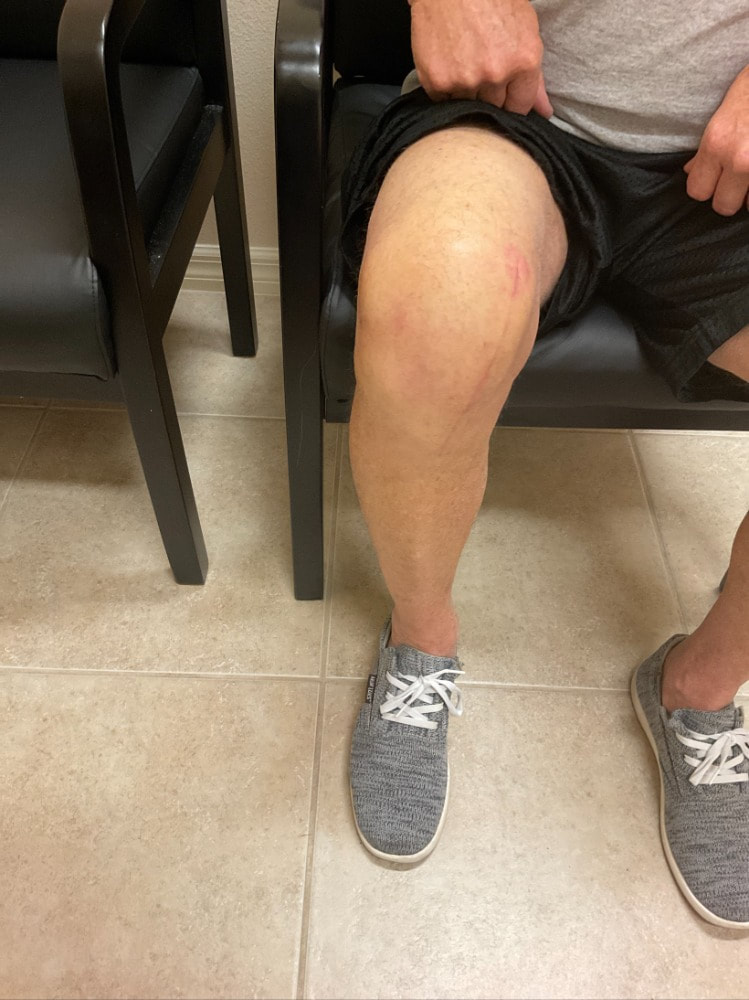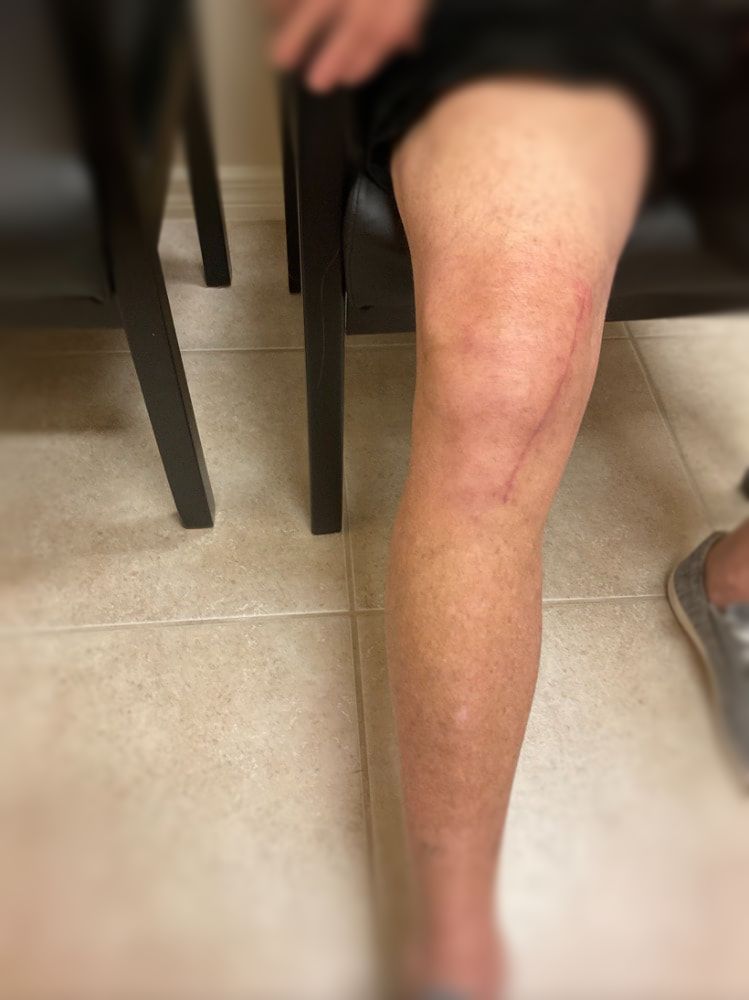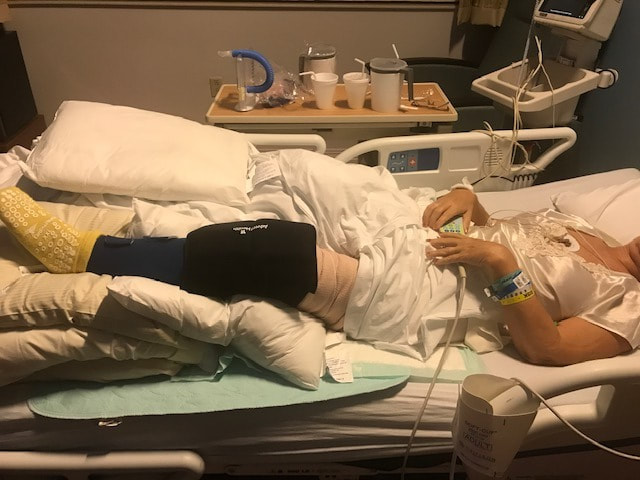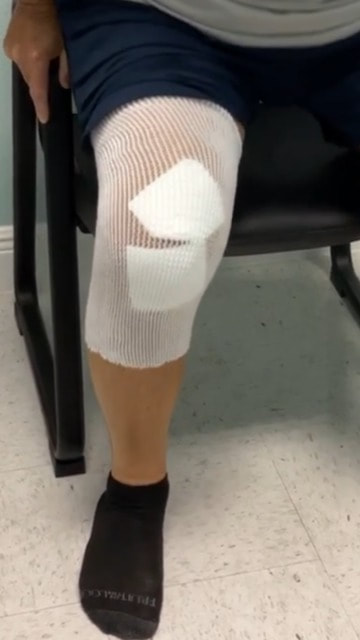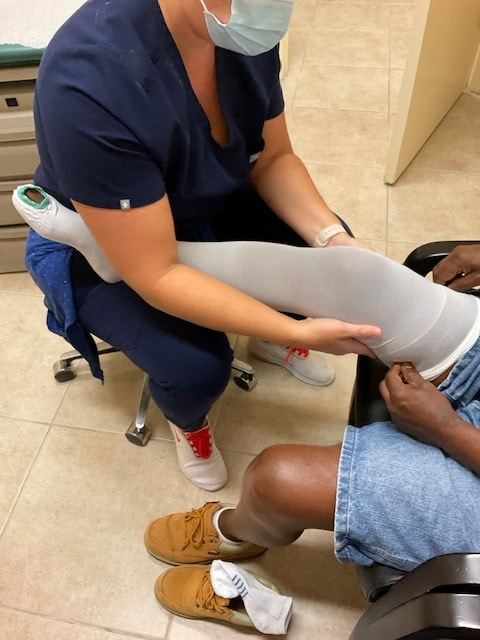Michael Messieh, Orthopedic Surgeon
Offices in The Villages and Clermont, Florida
352-243-6899
Are You Living With Knee Pain? Don't let knee pain stop you
Visit our Blog page to answer questions about knee replacement surgery
Where is the incision made for knee replacement surgery?
The new knee implant can be inserted several ways. The incision may be made in the middle of the knee, the most common way or on either side of the kneecap. The advantage of making an incision on the side of the kneecap is that the muscles may not be cut. However, the incision on the outer side of the knee has some disadvantages; certain knee implants cannot be easily used; the knee may be feel unstable. ie slips out when you walk and seeing the entire knee is more difficult. Choosing which side to make the incision is a conversation to have with your surgeon.
The medial side approach to total knee replacement
Dr. Michael Messieh offers a minimally invasive, muscle sparing approach to knee replacement surgery. The muscles over the knee are not cut but rather lifted up out of the way. This side approach may result in significantly faster recovery and more strength and mobility in the new knee. Dr. Messieh has performed lateral side, medial side and quad sparing knee replacements. Make an appointment to discuss your options
individual results may vary for all procedures shown
Offices in The Villages and Clermont, Florida
352-243-6899
Are You Living With Knee Pain? Don't let knee pain stop you
Visit our Blog page to answer questions about knee replacement surgery
Where is the incision made for knee replacement surgery?
The new knee implant can be inserted several ways. The incision may be made in the middle of the knee, the most common way or on either side of the kneecap. The advantage of making an incision on the side of the kneecap is that the muscles may not be cut. However, the incision on the outer side of the knee has some disadvantages; certain knee implants cannot be easily used; the knee may be feel unstable. ie slips out when you walk and seeing the entire knee is more difficult. Choosing which side to make the incision is a conversation to have with your surgeon.
The medial side approach to total knee replacement
Dr. Michael Messieh offers a minimally invasive, muscle sparing approach to knee replacement surgery. The muscles over the knee are not cut but rather lifted up out of the way. This side approach may result in significantly faster recovery and more strength and mobility in the new knee. Dr. Messieh has performed lateral side, medial side and quad sparing knee replacements. Make an appointment to discuss your options
individual results may vary for all procedures shown
When Can I Play golf after knee replacement surgery
A new era in personalization
Fit matters. When something fits well, you feel good wearing it. The Zimmer Persona Knee System offers extensive implant sizes and shapes so your surgeon can tailor your implants to fit your unique anatomy.
- The femoral implant comes in standard and narrow options to accommodate various bone sizes
- The bearing insert comes in 1 mm size increments
- The tibial implant provides appropriate bone coverage
Watch this video on knee implant sizing and fit
Is it time for a knee replacement ?
Here are some signs to consider:
Here are some signs to consider:
- Your pain has been gradual and been occurring in a persistent pattern for years
- The pain has been worsening
- The pain affects activities of daily living
- You experience painful range of motion, decreased range of motion and pain with walking and stairs
- Medications, physical therapy and injections are no longer providing enough relief
Be sure to let your doctor know about any pre-existing medical conditions and allergies to metal before surgery.
Follow all of your doctors instructions before and after surgery
Read the surgical consent carefully. There is no guarantee with any surgical procedure. Stiffness, pain, infection, blood clots, loosening and instability may occur. If the leg is very crooked before surgery or a revision is performed, you may feel or have a lengthened leg which may require a shoe lift. This is more common after hip replacement surgery. Some patients experience pain and difficulty with kneeling after surgery
Follow all of your doctors instructions before and after surgery
Read the surgical consent carefully. There is no guarantee with any surgical procedure. Stiffness, pain, infection, blood clots, loosening and instability may occur. If the leg is very crooked before surgery or a revision is performed, you may feel or have a lengthened leg which may require a shoe lift. This is more common after hip replacement surgery. Some patients experience pain and difficulty with kneeling after surgery
Knee exercises after knee replacement surgery
Here is an example of a typical post operative routine:
First Day after total knee replacement:
There is an ACE wrap from ankle to thigh around the leg. The wrap is kept on the knee for 1 week until the patient is seen in the office. If the wrap becomes stained or loose, the homecare nurse will change the wrap
First Day after total knee replacement:
There is an ACE wrap from ankle to thigh around the leg. The wrap is kept on the knee for 1 week until the patient is seen in the office. If the wrap becomes stained or loose, the homecare nurse will change the wrap
The leg is elevated on several pillows to be above the level of your heart to avoid swelling
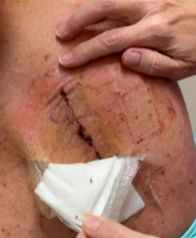
At the 1 week visit, the ACE wrap is removed.
The deeper transparent sticky strip is kept in place for an additional week. The skin glue on the transparent strip is important . Keep the sticky strip dry for 2 weeks so that the skin will heal well and avoid the risk of infection. You may shower at 2 weeks. No lotions, creams or moisturizers are to be used for at least 4 weeks on the incision. No tub baths or swimming in a pool for 3 weeks.
Here are 2 examples of bandages that may be applied at the 1 week appointment:
The deeper transparent sticky strip is kept in place for an additional week. The skin glue on the transparent strip is important . Keep the sticky strip dry for 2 weeks so that the skin will heal well and avoid the risk of infection. You may shower at 2 weeks. No lotions, creams or moisturizers are to be used for at least 4 weeks on the incision. No tub baths or swimming in a pool for 3 weeks.
Here are 2 examples of bandages that may be applied at the 1 week appointment:
This compression stocking is good for leg swelling
